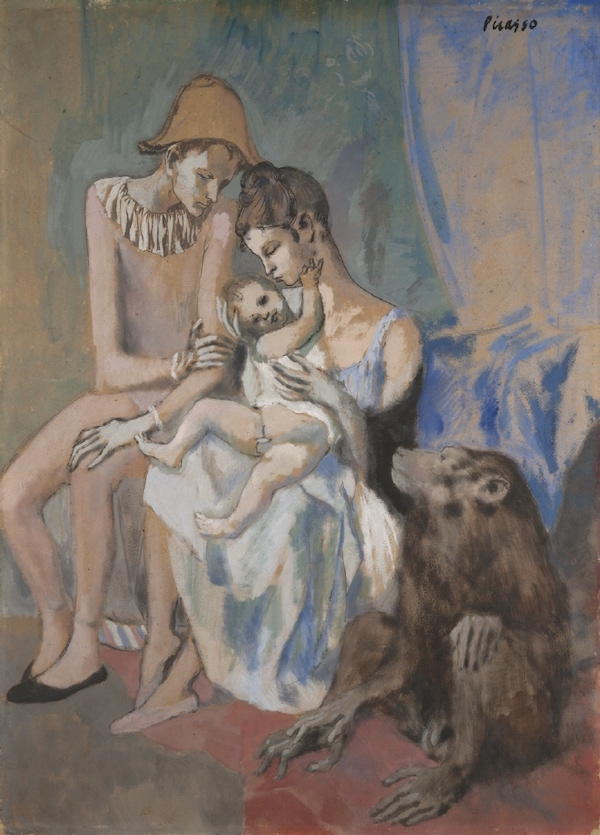The Acrobat's Family with a Monkey, 1905 by Pablo Picasso
The Acrobat's Family with a Monkey is one of the most important works that Picasso produced in his 'blue' to 'pink' transition period. At this time, the subject of domestic intimacy was prevalent in his painting, and the ambivalence of Picasso's feelings towards this 'theme' is most strikingly illustrated in this particular work. That it was the painter's own circumstances which partly inspired the study is unquestionable. He was now living with the beautiful Fernande Olivier, who had adopted a child and had soon become a constantly adoring and devoted 'mother', while Picasso found it impossible to sustain a consistently paternal role.
On studying the painting we can detect a certain awkwardness in the attitude of the acrobat, which suggests a distance in his relationship with the child similar to Picasso's detachment from his adopted daughter. The most notable feature must be the monkey, probably inspired by Picasso's pet monkey. This animal has always been, of course, a natural companion of fools, jesters and 'acrobats' since medieval times. It is interesting to note how alike the attitudes of man and monkey are in the painting and how the compositional relationship of both to the mother and child match each other.
What cannot be ignored is the obvious influence of the Renaissance painters in Picasso's work. We are reminded, vividly, of Raphael's Holy Family with the Beardless St Joseph, where there is the same elegance and serenity of the mother, the detached air of the 'foster' father and the lively movement of the child. In Picasso's compelling picture, however, there is not even the eye contact between father and child that is present in the Raphael.





















